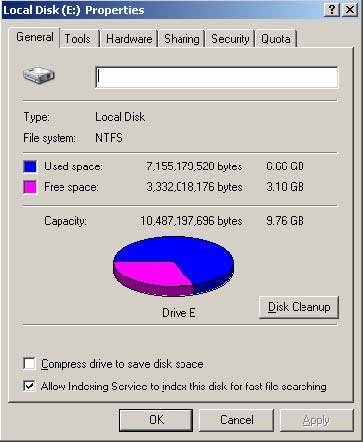It updates the control file with the new location of the data file.
It updates only the data dictionary with the new location of the data file.
It changes the location of the user_data01.dbf file in the operating system.
It changes the location of the user_data01.dbf file in the operating system and updates the control file with the new location of the data file.
第1题:
A.Itupdatesthecontrolfilewiththenewlocationofthedatafile.
B.Itupdatesonlythedatadictionarywiththenewlocationofthedatafile.
C.Itchangesthelocationoftheuser_data01.dbffileintheoperatingsystem.
D.Itchangesthelocationoftheuser_data01.dbffileintheoperatingsystemandupdatesthecontrolfilewiththenewlocationofthedatafile.
第2题:
Examine the RMAN command: SWITCH DATAFILE ’/DISK3/user_data01.dbf’; Which command do you need to issue before you issue the above command, so that RMAN finds the file in the restored location of ’DISK2/user_data01.dbf’? ()
第3题:
You are the administrator of a SQL Server 2000 computer in your company's personnel department. Employee data is stored in a SQL Server 2000 database. A portion of the database schema is shown in the exhibit.

You want to create a text file that lists these data columns in the following format title, FirstName, LastName, WorkPhone, PositionName, DepartmentName.
You want to create the text file as quickly as possible. You do not expect to re-create this file, and you want to avoid creating new database objects if possible.
What should you do?
A.Use the bcp utility to export data from each table to a separate text file. Use format files to select the appropriate columns. Merge the data from each text file into a single text file.
B.Create a view that joins data from all three tables include only the columns you want to appear in the text file. Use the bcp utility to export data from the view.
C.Create a SELECT query that joins the data from the appropriate columns in the three tables. Add an INTO clause to the query to create a local temporary table. Use the bcp utility to export data from the local temporary table to a text file.
D.Create a SELECT query that joins the data from the appropriate columns in the three tables. Add an INTO clause to the query to create a global temporary table. Use the bcp utility to export data from the global temporary table to a text file.
第4题:
Your Oracle10g database contains a table with a TIMESTAMP TO LOCAL TIME ZONE column. There are about two hundred column values for the column. You issued the following statement: SQL> ALTER DATABASE SET TIME_ZONE =’Europe/London’; What will be the result of issuing the above statement?()
第5题:
You issued the following statement: SQL> ALTER DATABASE BACKUP CONTROLFILE TO TRACE; What will be the result of issuing the statement?()
第6题:
You issue this statement:ALTER DATABASE BACKUP CONTROLFILE TO TRACE; What does the statement generate?()
第7题:
You executed the following command to back up the control file: ALTER DATABASE BACKUP CONTROLFILE TO TRACE; What do you find in the trace file?()
第8题:
You are the administrator of a SQL Server 2000 computer. The server contains database named Sales. Users report that they cannot add new data to the database. You examine the properties of the database. The database is configured as shown in the Sales Properties exhibit.

You examine drive E. The hard disk is configured as shown in the Local Disk Properties exhibit.

You want the users to be able to add data, and you want to minimize administrative overhead. What should you do?
A.Increase the maximum file size of Sales_Data to 1,500MB.
B.Use the DBCC SHRINKDATABASE statement.
C.Set automatic file growth to 10 percent.
D.Create another data file named Sales_Data2 in a new SECONDARY filegroup.
第9题:
One of the tablespaces is read/x7fonly in your database. The loss of all control files forced you to re/x7fcreate the control file. Which operation do you need to perform after re/x7fcreating the control file and opening the database?()
第10题:
You created the ORDERS table in your database by using the following code: SQL> CREATE TABLE ORDERS (ORDER_DATE TIMESTAMP(0) WITH TIME ZONE); Then, you inserted data in the ORDERS table and saved it by issuing the following statements:SQL> INSERT INTO ORDERS VALUES(’18-AUG-00 10:26:44 PM America/New_York’); SQL> INSERT INTO ORDERS VALUES(’23-AUG-02 12:46:34 PM America/New_York’); SQL> COMMIT; Next, you issued the following statement to change the time zone for the database: SQL> ALTER DATABASE SET TIME_ZONE=’Europe/London’; What will be the result of executing the above statement?()